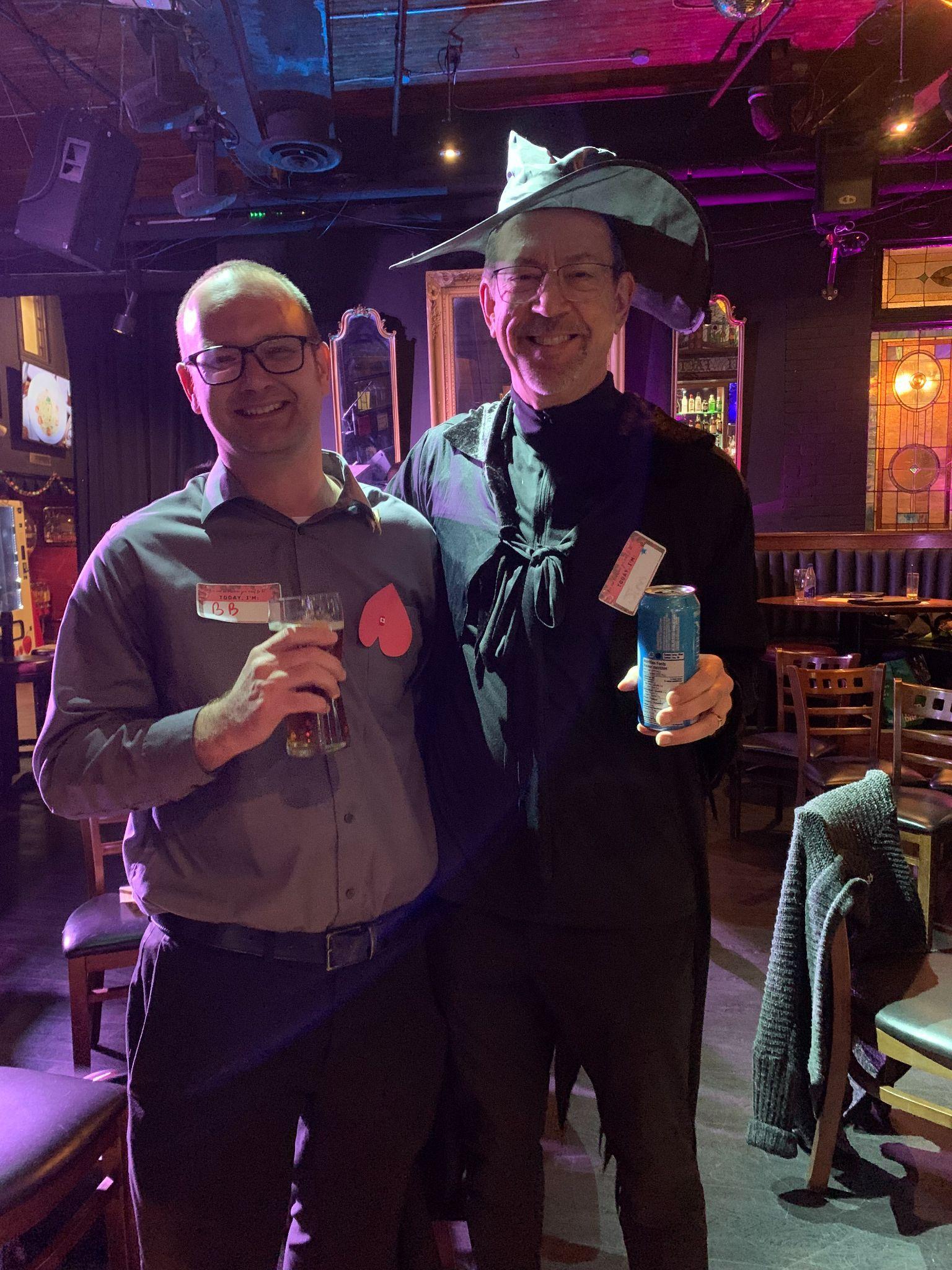Mentor Spotlight Andrew Dardaine

Andrew spent twenty years as a Financial and Banking expert in Canada andTrinidad, working for the Royal Bank and Bank of Montreal, in the Personal and Corporate lending fields.
For twenty-three yearsAndrew worked at UHN coveringToronto General, Toronto Western and Princess Margaret sites; Sick KidsToronto; NorthYork General; CHEO in Ottawa.
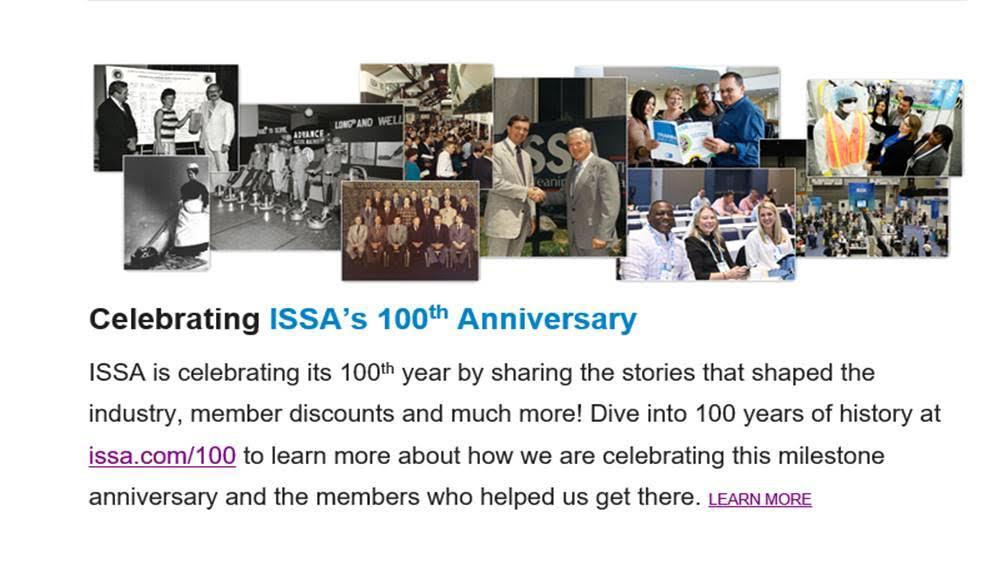
Employment in healthcare covered the whole gauntlet of Porter to Supervisor, Manager, and Director prior to retirement from CHEO in 2012.
In conjunction with the CHHA,Andrew taught the CHHAEVS Frontline Course atAlgonquin, Mohawk, St. Lawrence, and Loyalist Colleges. He consulted with the CHHAon training programs
within healthcare facilities and is currently a Mentor for the CHHA EVS Leadership Program.

He has a Bachelor of Social Work from Ryerson University, Master’s in social work from the University of Toronto and is anAssociate, at the Canadian Institute of Bankers.
Family is extremely important to Andrew, and he spends most of his spare time with his family. He is a passionate soccer fan and prefers not to be disturbed during soccer games.Andrew believes the greatest gift in life is spiritual love.
Page 2
Learn More: The IPAC Standard requirements and legislation
View CHHA Mentor Profiles

Transforming our mindset to manage 5 generations in the workplace.
Submitted by Shawn Bolger
Many positives can come from a multigenerational workforce if we tackle the challenge from an enlightened and open-minded point of view. Each generation will have strengths and principles that bring new perspectives into the workplace, contributing to the overall well-being of the department if handled appropriately.
In today's work environment, understanding the differences between the 5 generations can be crucial to the success of your business. It should be a constant consideration in every process throughout the day.
Just like any other factor influencing decision-making in the workplace, a proactive approach to managing
employees must be ingrained into the consciousness of every manager and every policy developed by the organization from recruiting and retention as well as the operations of every department.
Managers must also be careful to use an unbiased approach when balancing the different expectations of each unique group or it can create tension between employees.
Learning about the work habits of each generation, understanding the influences of that period, and anticipating employee needs can benefit organizations as they develop their human capital management plan.Although there may be some crossover in experiences from

generation to generation and in some cases, an individual employee’s principles may be more in line with the previous or subsequent generation, most of the group’s values and needs are the same because the influences in their upbringing are woven into the fabric of their subconscious.
Generation Z (1997–2012)
Raised in a time surrounded by technology, social media, mobile devices, computers, and the internet, the Gen Z group view smartphones and other devices as essential.
(continued on next page)
Page 4
Compared to previous generations, they tend to be more focused on the behaviors of a person i.e. funny, kind, smart, friendly vs. issues like race or ethnicity, based on how technology has shaped their relationships. Student debt is a factor for Gen Z that influences career choices and compensation needs.
Management Strategies
Gen Zers want to participate in highly collaborative management relationships. These employees look to management to establish a strong operational plan and set an example to help them learn and grow.
When developing policies for this generation, management teams should focus on attracting the right people and invest in their development by creating mentoring and coaching programs as well as providing learning opportunities with senior staff.
Employee Benefits for Gen Zers
Workplace flexibility is most important, even more than health care or training and development.
Other priorities include:
-Assistance with student debt

- Competitive salaries
- Financial incentives (raises after completing a project)
-Tuition reimbursement
- Formal training opportunities
Millennials (1981–1996)
The largest group in the current workforce. Many started working during a recession, which has affected how they view their career objectives based on a 5-year goal instead of 25 year or retirement plan.
They grew up as the internet transformed society, therefore they are more comfortable communicating digitally through instant messages, email, or texts rather than talking to a coworker in person, if only for efficiency purposes. Most Millennials own smartphones, and they adapt to new social media platforms and technology quicker than older generations.
Management Strategies
Related to their shorter-range career objectives, retention efforts should be focused on skills development programs that address their ambition for promotion through leadership training, skills development, and career advancement.
Millennials will flourish in companies that concentrate more on a deeper purpose and how it helps make the world a better place. Be more flexible in scheduling by allowing them to adjust their work hours or by giving them opportunities to work remotely if their job responsibilities can be completed outside the office.
Millennials care about performance management and quality improvement strategies; they tend to judge their managers by the content of their work. Millennials also want to be judged for
their results and the quality of their work not for the hours spent in the office. When communicating with Millennials, managers should take a transparent and honest approach, making sure to invite questions from employees.
Employee Benefits for Millennials
Millennials value career development opportunities as well as benefits that prioritize a work/life balance
Some examples include:
- Career development programs
- Monetary incentives
- Volunteer programs to give back
- On-site daycare
- Mortgage services
(continued on next page)
Page 5
(continued from previous page)
ISSA
Available
Learn More:
Scholarship Applications
(continued from previous page)
Generation Xers (1965–1980)
Squeezed between the baby boomers and Millennials, Gen Xers were shaped by the evolution of personal computers. This generation is generally more educated than previous generations. Viewed as self-reliant and hardworking, Gen Xers tend to be more conservative and fiscally responsible.
Management Strategies
Gen Xers are comfortable using technology for business purposes but they're also comfortable with face-to-face interactions. While at work, members of this generation may prefer an environment with more emphasis on the individual as well as greater physical and psychological space.
Gen Xers typically prefer to manage their workload with less supervision and greater independence when it comes to completing tasks, deadlines or job responsibilities.
They typically have life, career and work experience that should be valued by managers. Members of this generation may be more established in their personal lives and want a more flexible schedule that allows them to achieve a healthy work/life balance.
Employee Benefits for Gen Xers
Gen Xers may be particularly concerned with healthcare coverage, flexible workforce arrangements, on-site daycare, and other perks that support a work/life balance.

Some examples include:
- Monetary incentives
- Stock options
- Gift cards
-Tuition reimbursement
- Mortgage services
Baby boomers (1946–1964)
Born after the war, baby boomers are known for their strong work ethic and goal-focused tendencies. Baby boomers are hardworking and value face-to-face interaction because they didn't grow up using computers like the younger generations did. However, they will use technology for job-related functions and they are learning to rely on computers with IT support and task specific on the job training.
Management Strategies
Retention strategies that work well for this generation focus on recognizing them for achievements through
employee recognition awards and award programs they can share with family, friends, and coworkers.
Baby boomers aren't usually job-hoppers, so job security is appealing to them.They may appreciate a more formal and structured environment than younger generations would and growing up without digital communication means they're more responsive to interaction in group meetings.

Baby boomers want to be recognized for their skills and they appreciate the chance to share their knowledge and expertise. Managers should look to utilize their skills and encourage them to mentor younger employees because they are a great source of information about the background and history of their industry.
Employee benefits for Baby Boomers
Many members of this generation are nearing retirement therefore they have a different outlook on their life and they appreciate flexible work policies.
(continued on next page)
Page 6
(continued from previous page)
Many Boomers will consider putting off retirement if offered options.
Some examples are:
- Reduced schedules.
-The option of working from home
-Alternate hours.
- Health care and retirement benefits, including a pension contribution match Incentive.
Silent generation (1928 and 1945)
As the oldest generation currently in the workforce, they grew up without technology and many of the modern conveniences we now take for granted. Many members of this generation have overcome adversity, poor personal monetary situations and global economic conditions that steered them towards prudent financial habits.They are hard workers with strong core values.
Management Strategies
Stressing the importance of the fundamentals can help companies attract and retain employees from this generation.They want to feel as though they're respected, appreciated and paid fairly for a job well done.Although this generation can recognize the convenience of the technology used today, they may not be as comfortable using it. Providing offline options to complete tasks can create a positive work environment for older employees.
Like the baby boomers, they value personal interactions and are generally more effective when meeting face-to-face. In-person discussions can help clarify goals and allow managers to provide feedback.
Encouraging them to share their knowledge and expertise can benefit the entire workforce by means of younger employees learning the basic principles of routine business practices.
Employee Benefits for Silent Generation
As tenured employees, silent generation employees typically are more focused on healthcare and retirement benefits.
They may be working to build up a pension from long-term employment.
They may also appreciate flexible work policies
Some examples include:
- Paid time off
- Better health benefits
- Options to transition into full retirement.
Managers, focused on effective communication skills for a diverse workforce and understanding the priorities of each generation, will retain a more satisfied and stable workforce that will avoid costly grievances as well as time-consuming labour relations issues.
create a better team and work environment for everyone.
Successfully managing a multiple-generation workforce requires an awareness of changing priorities, a willingness to embrace new ways of managing staff and discovering the best in the people working in attracting the best talent. Now is the time to make these investments and to lay the foundation for long-term success.
Resource: How to Manage the 5 Generations in the Workplace
Learning to work with and capitalize on the benefits that come with every generation, while utilizing the life experience, expertise and problem-solving skills of all their employees will help to

Page 7
Cleaning for a Reason Chili Cook-Off. An Outstanding Success
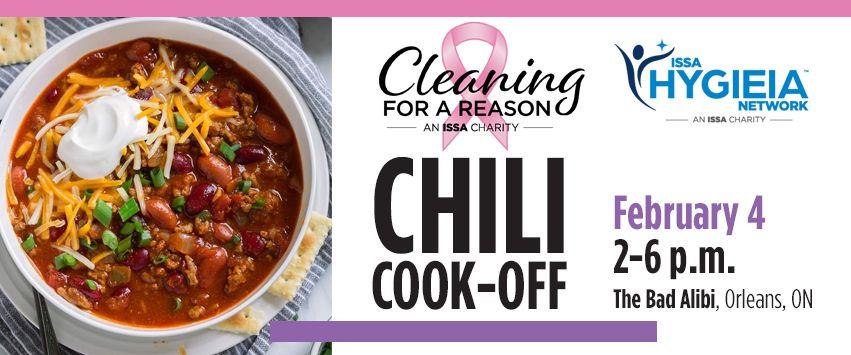
The Cleaning for a Reason Chili Cook-Off held atThe BadAlibi in Orleans, ON, on February 4 was an outstanding success. Organized by John Riches, president of RichesAssociates and co-chair of the ISSACharities Board of Directors, the event saw close to 80 hungry participants from across Ontario attend to support Cleaning for a Reason, an ISSAsignature charity.
“It was so wonderful to see the support of family, friends, and industry partners who turned out to taste our fantastic chili’s and bid on a host of amazing prizes in the silent auction, Riches said. “What a great way to support the gift of a clean home for cancer patients.”
The highlight of the afternoon was the variety of tasty chilis cooked up by chefs who were eager to share their trade secret recipes. In addition to the top three winners, a special prize was also awarded to Shannon Hall, vice president of Dustbane Products Ltd. and captain of the ISSAHygieia Network Canada Region, whose chili recipe was the fan favourite.
Avariety of prizes were also up for grabs through a silent auction, including LCBO gift cards, NFL, NHLand MLB jerseys, a SteveYzerman signed hockey jersey, Dyson V8 vacuum, and much more.To date, the event has raised over $7,500 for the Cleaning for a Reason cause. Founded by Debbie Sardone in 2006, Cleaning for a Reason provides free home cleaning to patients battling cancer. When cancer makes life at home difficult, a trusted network of residential cleaners, cleaning industry volunteers, and community volunteers come together to support cancer patients and their families.
Since its founding, Cleaning for a Reason and its partners have provided free home cleaning services for more than 47,165 cancer patients and their families across the United States and Canada.
Page 8

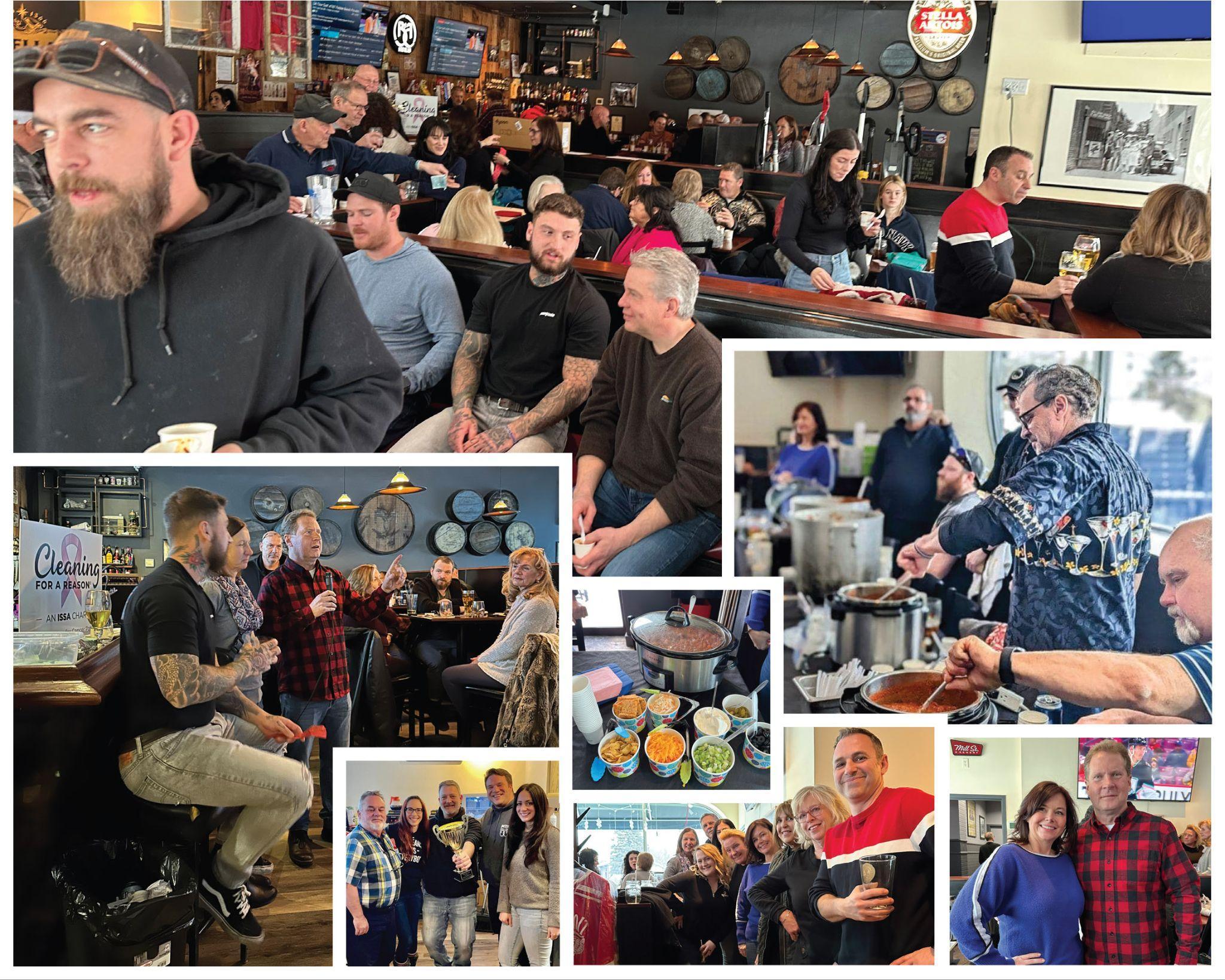
Cleaning for a Reason Chili Cook-Off.
What’s the Bug withAuditing Cleanliness?
By Mark Heller
The recent global Pandemic has demonstrated the importance of an effective cleaning & disinfection strategy in congregate living environments, indoor workplaces, and other risk environments.

The appropriate cleaning and disinfection protocol, supported by the right products, that is consistently executed by well-trained personnel, is supposed to deliver the right outcomes.
But how do we know the desired outcome is being achieved? How can we measure the return on our investment in people, products, and equipment?
Inspecting for cleanliness is not new, the proverbial ‘White Glove’test has been around for decades.Today most Environmental Services managers are familiar with environmental audits which are generally accepted as a non-clinical method for applying a quantitative or qualitative assessment of environmental hygiene outcomes and staff service performance, says Heller.
Amanager’s toolkit has several types of audit methods in it, such as: Visual CleanlinessAssessments, Microbial SimulationAudits,Adenosine Triphosphate (ATP), and Process ObservationAudits.
Each audit method contributes to the overall assessment of performance and outcomes. No single audit method tells the complete story. With a high degree of variability in audit methodology and a lack of uniform scoring algorithms, audit results are challenging to interpret and almost impossible to compare between facilities.
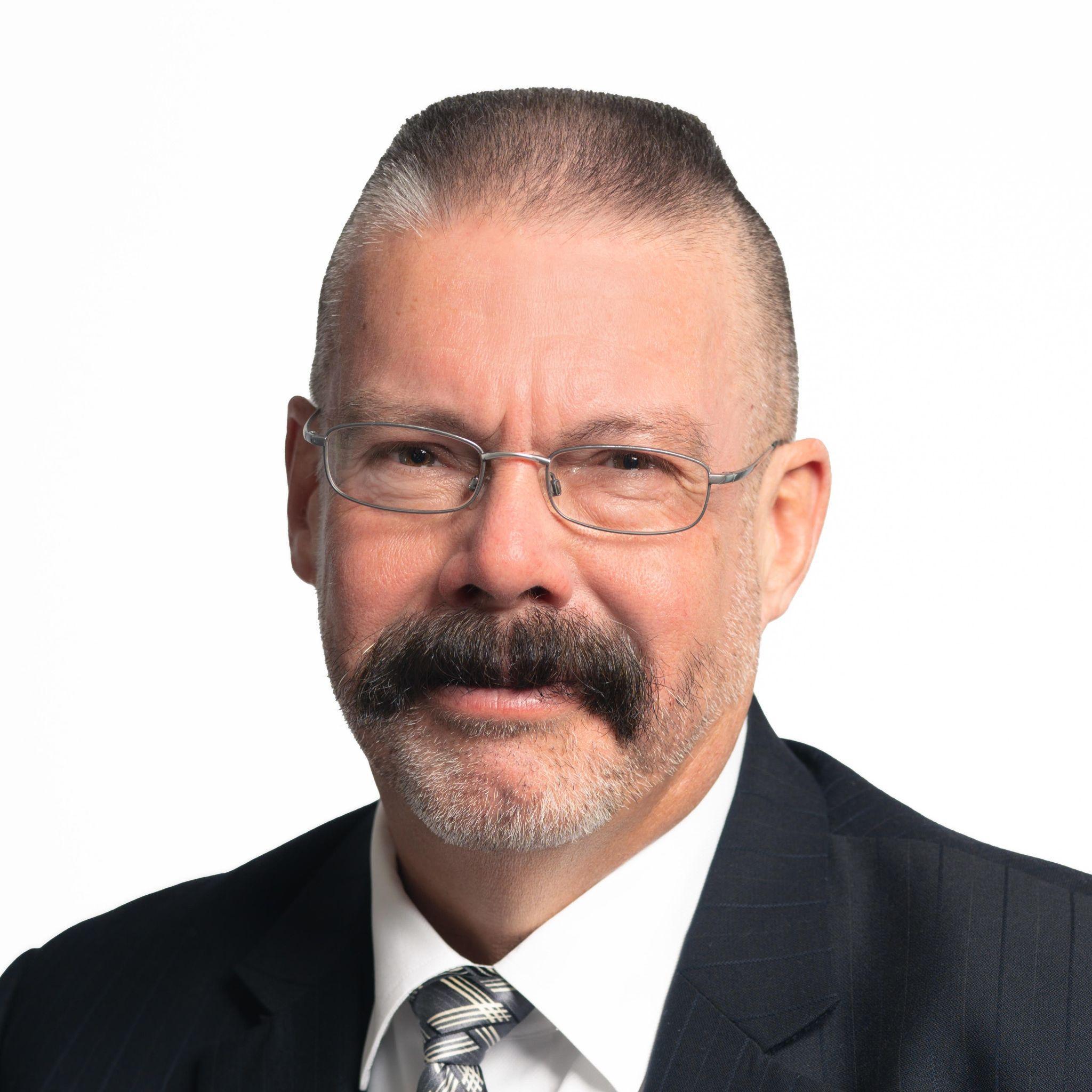
Different interpretations of what is satisfactory adds to the burden of score reliability; more specifically, interpreting “What Good Look Like” is an individual decision. Various attempts have been made to create detailed quality outcomes specifications. Some have been easy to interpret, while others are more challenging to apply in a dynamic and complex healthcare environment.
Frequently, the grading decision relies on the individual opinion of the auditor.
With these challenges, some may wonder if environmental audits are worth the effort.
There is no question that performing audits takes time; however, the data has proven to be invaluable at the individual facility level to building understanding with hourly staff; achieving service consistency across the team; and identifying opportunities for training and coaching.There are real benefits to a program of environmental audits, and while the process is open to criticism and the data outcomes may have limited, more anecdotal application, the positive benefits outweigh the negative criticisms, says Heller.
(continued on next page)
Page 10
Introducing automation into the audit process is another variable.There are many audit technology platforms available in the marketplace. Each automated system has unique features that may provide specific benefits; however, the overall value of automation is the improved efficiency in performing audits, increased reliability in data administration, and better opportunity to customize findings for specific applications.
Environmental Services performance impacts many aspects of patient-resident-workplace safety and satisfaction, and management is held accountable for delivering value for money, therefore audit finding reports should be communicated to several vital stakeholders, including hourly Environmental Services staff, Infection Prevention and Control, the organization’s quality management team, finance, and administration.
Implementing an audit technology solution starts with having clearly defined project goals and objectives. With the outcome agreed upon, the next step is to understand the operational condition of use, which includes the budget for technology, and resources available to mobilize the solution. Information Systems policies and conditions are often required to launch data technology; bringing the ITdepartment into the project before theTechnology Platform is selected, is essential.
In some cases, audit technology is made available from a contracted services provider or a product-equipment vendor. In both cases, the understanding is that access to these platforms is typically conditional on the continuation of the core product or service.
Moving forward with a platform that can adapt to the facility's unique requirements is paramount.The technology must serve the needs and desired business processes of the user organization; it also must be practical and easy to use, preferably with existing mobile technology. Indeed, many supervisors and managers are already required to carry a mobile voice-data communication device; audit technology should not require another item to be carried about.
Mobilization of chosen audit technology platform begins with establishing the audit methodologies, templates, and framework, launching the technology (which typically includes loading of detailed space profile of the facility as well as other data, training the auditors, communicating with key stakeholders, and publishing and interpreting the findings.
Having the resources to launch this project successfully can be a barrier. Frequently, Environmental Services managers and supervisors simply don’t have the capacity to add this burden to their workload; and may need specialized and experienced project support.
The key is to start at a basic level, often with a single audit methodology, and maintain project momentum to make audits happen as soon as possible, and begin to share results quickly. Additional audit methods and customizations can be added.Asolid foundation is critical to supporting the subsequent launch of audit methods and supporting the ever-changing roster of service staff and operating conditions.

Page 11 (continued
from previous page)
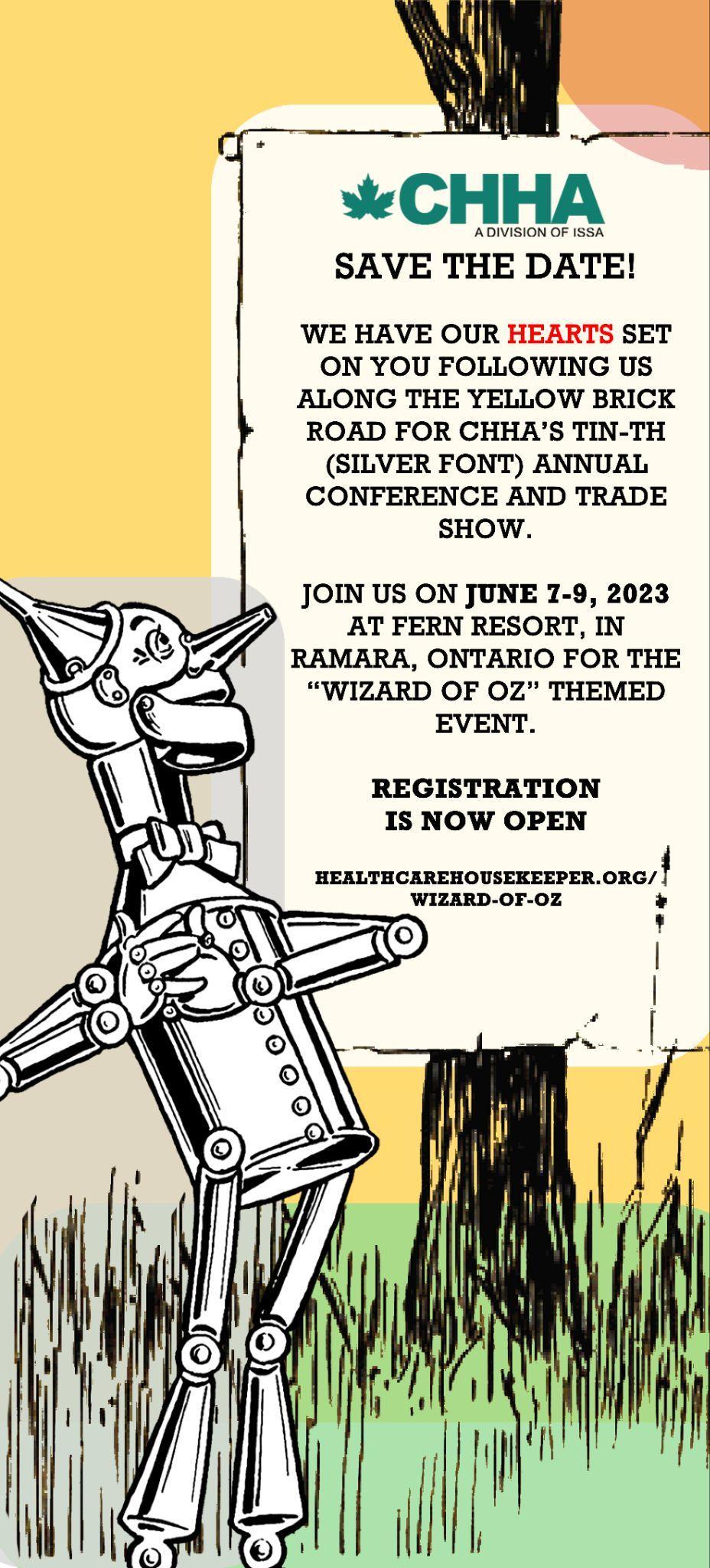
Notable Happenings in Healthcare
While it should go without saying that Environmental Service workers are an essential part of any healthcare community, the experiences that have touched us all throughout the past 3 years have certainly reminded us of the incredible people that serve our facilities from the front lines.
Although we would like to acknowledge all EVS workers and recognize them for their contributions to our health and well-being every day, we have to take opportunities when we can and celebrate our wins and accomplishments. Therefore, we are asking you to submit a story to be highlighted in the CHHA newsletter regarding the fabulous activities, special projects or events that you have going on in your facility.
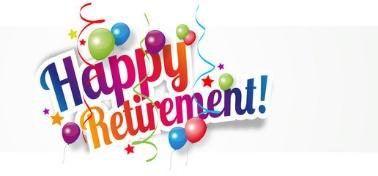
Through this newsletter we will be able to shine a spotlight on EVS by sharing positive uplifting experiences and accomplishments that make your healthcare facility unique and exceptional. Our hope is that this will inspire us to persevere through the hardships that we have all faced and to look ahead to the greatness that goes on in healthcare every day.The story can be from an EVS perspective or a notable activity that makes you proud of your workplace or your department and the people in it.

After 44 years of working at Hotel Dieu Shaver Rehabilitation hospital, Brad Wood has decided to hang up his nametag and retire his safety shoes. Brad had seen many changes over the years and has a collection of interesting stories to tell if you dare to engage him in a conversation. Brad is a welcomed distraction at HDS, known for spontaneously breaking into a song and dance routine in the hallway for patients and staff alike or for his corny one-liners about being a “bald man” in today’s society. Brad has also been the brunt of many jokes regarding the speed in which he walks while making his rounds to collect soiled linen and garbage from the patient care areas throughout the facility.
I have to agree with Brad, “slow and steady wins the race” and I am positive when he makes his exit the staff
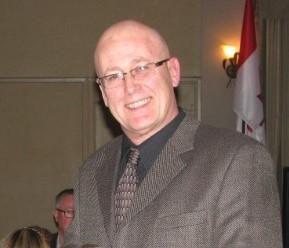
will quickly become aware of just how important consistency and timing is to the job he performs at HDS.
Brad has been a project porter in the Housekeeping department for most of his years but we can’t take all the credit for the employee Brad has become. Brad started as an Orderly back in the day and transferred temporarily to Maintenance when they found themselves shorthanded and in need of some reinforcement.
One way or another Brad made his way back home to the Housekeeping department where he took on the added responsibilities of floor care to become the best darn “waxer” in the building. We will miss him greatly but we are grateful for all his years of service and all the fun memories we have of Brad!
Page 15
The Canadian Coalition for Green Health Care has been working diligently over the past year to complete the first comprehensive made-in-Canada environmental benchmarking tool for long-term care (LTC) and retirement homes (RH) and is now garnering participants to pilot this project.

The new scorecard continues the Coalition’s long-standing focus on helping health care organisations measure their environmental performance in a number of areas including energy and water conservation, waste management, corporate environmental leadership, pollution prevention, food, transportation and climate change.
Why Participate? Ultimately, your participation will provide the LTC/RH sector with important information and insights about their environmental performance and energy consumption. As well as:

● Help you measure your internal environmental performance to improve your sustainability initiatives;
● Help reduce your energy and greenhouse gas emissions using Canada’s first evidence-based environmental evaluation tool for health care;
● Provide you and senior leaders with important information to help guide budgeting and planning, highlight anomalies (i.e., fuel consumption, waste management fees, etc.) and assist in more informed decision-making; and
● See where you rank environmentally relative to peer organisations.
Become a thought leader in this pilot project by simply emailingAutumn autumn@greenhealthcare.ca and say ‘Yes, count me in!’
Autumn will set you up with you own unique survey link so you can start submitting your 2021 data before May 10th, 2023. If needed,Autumn will be happy to jump on a Zoom call to outline the basics and answer any questions.
Please see below for additional information about the IESO’s SaveOnEnergy financial incentive program, and the Coalition’s new FREE Environmental Stewardship Guidebook for boards, management, and clinical staff in the LTC/RH sector. (continued on next page)
Page 16
Long-Term Care and Retirement Home Scorecard Project Project Background
Through collaboration with long-term care (LTC) and retirement home (RH) partners, and with funding support from Ontario’s Independent Electricity System Operator (IESO), the Canadian Coalition of Green Health Care has developed a new comprehensive made-in-Canada environmental benchmarking tool designed specifically for the LTC/RH sector.
The tool helps LTC and RHs identify, measure and report on their environmental performance; helping enable sector-wide benchmarking of energy use, water use and waste management, pollution prevention, corporate leadership, food, transportation and climate change, that can be used by senior leaders to improve decision-making to advance sustainability and environmental performance.
Assembling these metrics will be supported by a web-based tool (“online tool”) to assist LTC/RH users in collecting the scorecard data.The online tool will facilitate data tracking and monitoring for the sector and will be used to populate your own unique web-based dashboard
LTC/RHs have already begun reporting on their environmental and sustainability initiatives through an online questionnaire created by the Coalition.
individual facilities to pursue funding support programs like the Save on Energy program in Ontario.
Note all data is being encrypted and stored on a secure server.The Canadian Coalition for Green Health Care does NOTdivulge or share your data or contact information with third parties without your express consent.
Benefits
● Become a thought leader in a Canadian health sector initiative.
● Assist in the collection of meaningful data to inform the sector’s conservation activities.
● Receive a high-level snapshot of your organisation’s environmental performance against a backdrop of de-identified peer data.
● Identify potential areas for improvement to environmental performance and operational efficiency unique to your organisation.
Additional Resources
Save on Energy Program (Financial incentives)
The Save on Energy program offers funding support to reduce energy consumption. Once you identify energy savings opportunities using the tools provided or through more comprehensive energy audits, you can consider applying to the Save on Energy program for possible funding.
reduction projects:
https://www.saveonenergy.ca/ForYour-Small-Business/Programs-a nd-Incentives
Environmental Stewardship: An implementation guide for boards, management, and clinical staff – Meeting Long Term Care Standards and beyond
This FREE downloadable guidebook provides an overview of some of the key steps and actions that senior leaders can initiate and support for their organisation to move towards a climate-resilient, carbon net-zero, and environmentally-sustainable health system. Rather than a comprehensive overview, this document is intended to be a primer to help the LTC sector with their transition to a greener system: from those starting their journey to those looking for new ideas to implement with an already robust sustainable system.
Access the guidebook: https://greenhealthcare.ca/guideb ooks/
The Canadian Coalition for Green Health Care is Canada’s premier green health care resource network and is leading the evolution of sustainability in Canada’s health sector as a national voice and catalyst for environmental change.
Participants will be provided with important information and insights about environmental concerns and enable
Visit their resources pages which provides case studies and help build the business case for energy
Collaboratively, our vision is a resilient, sustainable and low-carbon health system. https://greenhealthcare.ca/
Page 17
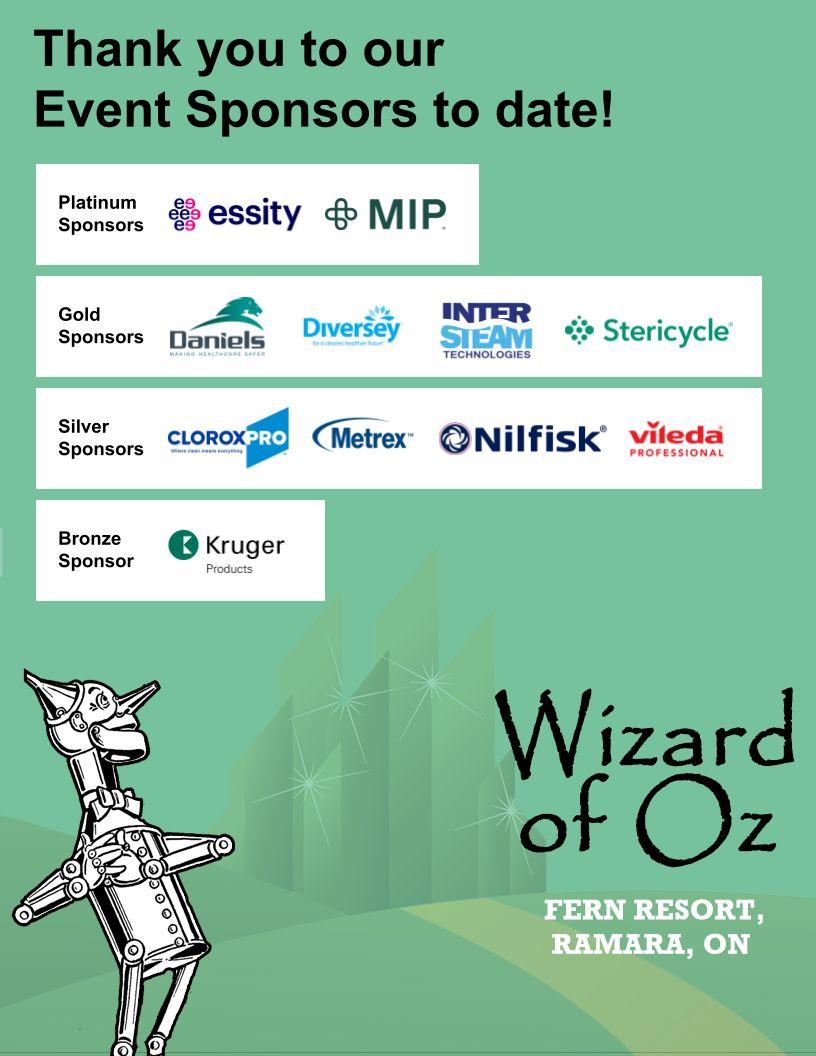

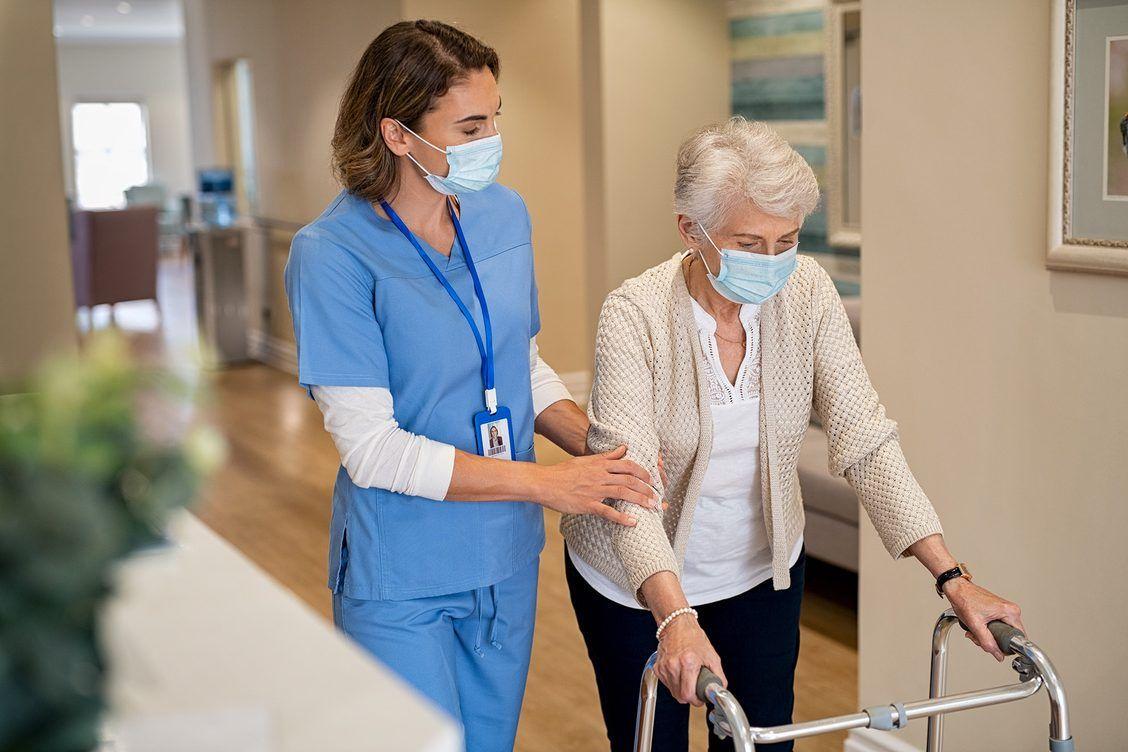



















 Past CHHA Award Winner
Past CHHA Award Winner


